This post was last updated on October 13th, 2023
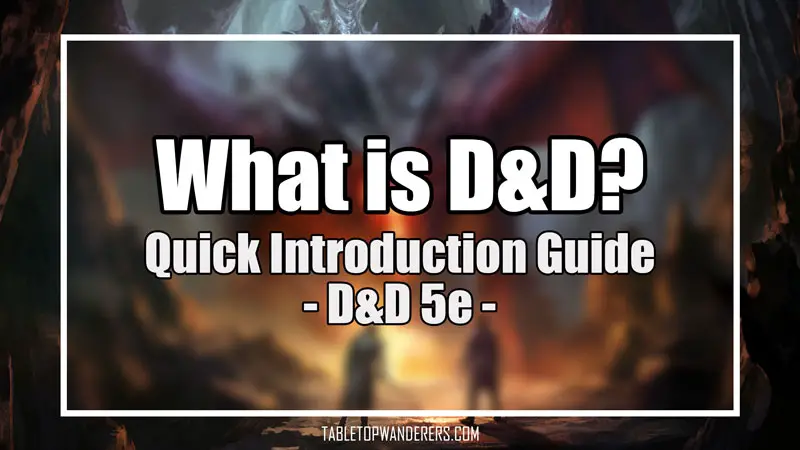
What is DnD?
Such a simple question could lead to infinite answers depending on the person you ask.
To me, Dungeons & Dragons is a unique blend of storytelling, strategy, and chances, which can lead to endless possibilities in order to create a fun and unforgettable adventure.
If you’ve ever been curious about how D&D works or wanted to get into the game yourself, then you’re in the right place.
Of course, this article is more of a quick introduction to D&D as it’s such a big topic that it wouldn’t be possible to include everything.
Hopefully, it’ll be enough to tickle your curiosity and why not, start playing it?
This post may contain affiliate links. If you click through and make a purchase, I will get a commission at no extra cost to you. See our Affiliate Disclosure.
What is D&D?

Dungeons & Dragons (D&D) is a cooperative, role-playing game where you and your friends create unique characters and embark on thrilling adventures.
You control a character in a fantasy world, cooperating with your fellow players to overcome challenges and achieve common goals.
One player takes on the role of the Dungeon Master (DM), who weaves together an engaging story and serves as a referee for the rules of the game.
During your journey, you’ll encounter various encounters, solve puzzles, and engage in combat. Success is determined by rolling dice and applying modifiers based on your character’s skills and abilities.
As your character experiences these adventures, they grow stronger, more skilled, and develop personal connections with the rest of the party.
To immerse yourself in this exciting world, all you need is a rulebook, a character sheet, a set of dice, and a fair bit of imagination.
How to play D&D?
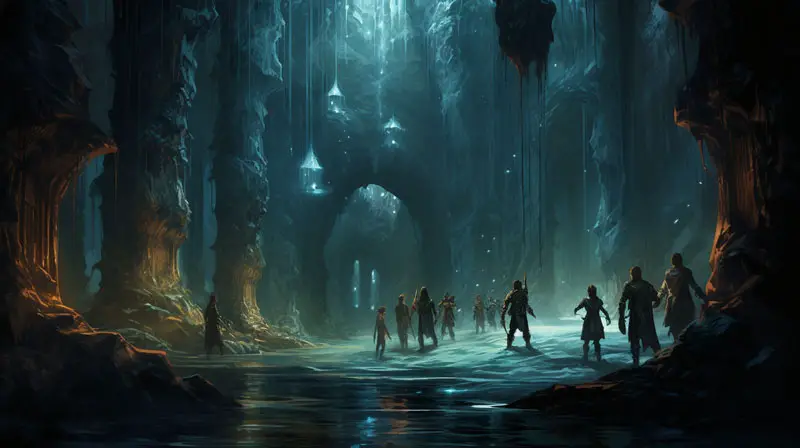
Form a Party a.k.a group of people
To play Dungeons and Dragons, you need a group of people to play with. My ideal group size is 3 to 5 players, but you can play with as many friends as you like depending on your preference.
Here are some tips for forming a group:
- Ask your friends: ask your friends if they are interested in playing D&D. You might be surprised to find out that they are also interested in playing.
- Join a local gaming group: check out your local gaming store or community centre to see if there are any D&D groups you can join.
- Use online resources: there are many online resources, such as Reddit and Facebook groups, where you can find people to play with.
Check out the article “14 Places & Sites to find Board Game Friends” as that should give you some further tips.
Once you’ve found other players, discuss your preferred playstyle, such as the balance between roleplaying, combat, and exploration.
Aligning expectations helps avoid conflicts during the game. Make an effort to understand each other’s availability to schedule sessions that suit everyone’s needs.
In your group, ensure everyone has access to the necessary resources, such as the Player’s Handbook, some dice, and a character sheet.
If you’re new to D&D, it’s helpful to have at least one experienced player in the group who can guide and teach others about rules and gameplay.
Finally, organise a session zero to create characters, discuss backstories, and establish party dynamics.
This initial meeting sets the foundation for a successful campaign, as players will have a better understanding of their characters and how they fit into the game world.
Find an adventure that suits your Party
First, consider the level of experience of your players. Are they beginners, veterans, or a mix of both?
If you have newer players, opt for an adventure with simple mechanics and a straightforward plot, like The Lost Mine of Phandelver, which you can find in the Dungeons & Dragons Starter Set.
For more seasoned players, select an adventure that offers complex challenges and a captivating story, such as Curse of Strahd or Tomb of Annihilation.
Next, think about the themes your players enjoy. Do they crave high-stakes political intrigue, intense combat encounters, or thoughtful puzzle-solving?
Use these preferences as a guide when choosing an adventure.
Popular 5e adventures and their themes include:
- Waterdeep: Dragon Heist: urban intrigue, politics, and treasure hunting.
- Descent into Avernus: dark, hellish landscapes and infernal warfare.
- Ghosts of Saltmarsh: naval combat and exploration in a coastal setting.
Don’t forget to consider the available time for your campaign.
Some adventures, like Storm King’s Thunder, can span months or even years of play, while others can be completed in just a few sessions.
Make sure to choose a campaign that fits your group’s schedule and commitment levels.
Decide who will be the Dungeon Master (DM)
In your group of friends, it’s important to decide who will take on the role of the Dungeon Master. The DM is responsible for guiding the players through the story, controlling the non-player characters (NPCs), and shaping the world in which your characters are living.
This person acts as the narrator, rules arbitrator, and world-builder.
Here are a few tips to help choose the right person for the job:
Consider experience: if someone in your group has prior experience as a DM, they may be a good fit for the role. Experienced DMs will have a better understanding of the rules and game mechanics. However, don’t discourage first-timers, as they can bring fresh ideas and enthusiasm to the game.
Look for creativity: a good DM should have a vivid imagination and be able to think on their feet. The DM will be responsible for creating the game world and adapting to the players’ choices. If someone in your group enjoys writing stories or has a knack for world-building, they might make an excellent DM.
Assess dedication: being a DM requires time and effort both during and outside the game sessions. The chosen individual should be willing to invest time in preparation, creating encounters, and understanding the rules. If someone demonstrates passion and commitment, they are more likely to be a successful DM.
Evaluate interpersonal skills: the DM should be able to communicate effectively with the players and foster a fun, engaging atmosphere. If you know someone who is empathetic, fair, and able to handle conflict well, consider them for the role of DM.
Create your Alter-Ego/Character
In order to dive into the world of D&D 5e, you’ll first need to create your character, your in-game alter-ego.
This enjoyable process lets you explore your imagination and craft the persona you’ll be playing the game with.
Your character will be created using what’s called a “Character Sheet“, which is a document that contains all the information about a player’s character, including their name, race, class, abilities, skills, spells, equipment, and other important details.
The character sheet is used to keep track of the character’s progress and development throughout the game and is typically updated after each session.
The sheet also includes information about the character’s hit points, armour class, and other important statistics used in combat.
Step 1: Choose a race
Your character’s race determines their physical traits and sometimes grants unique abilities. The races included in the Player’s Handbook are:
- Human
- Elf
- Dwarf
- Halfling
- Dragonborn
- Tiefling
- Half-Elf
- Gnome
- Half-Orc
Step 2: Select a class
Next, you’ll choose your character’s class, which defines their skills in combat and special abilities. The classes included in the Player’s Handbook are:
- Barbarian
- Bard
- Cleric
- Druid
- Fighter
- Monk
- Paladin
- Ranger
- Rouge
- Sorcerer
- Warlock
- Wizard
Consider what role you’d like to play in the game – whether supporting your allies with spells or being on the front lines as a warrior – and then choose a class that aligns with your desired playstyle.
Step 3: Ability Scores
Your character’s abilities are defined by six scores: Strength, Dexterity, Constitution, Intelligence, Wisdom, and Charisma.
You can assign a value to each ability (you can use different methods to determine them) based on the strengths of your chosen race and class.
For example, if you’re playing a Wizard, you’ll want a high Intelligence score, while a Fighter might focus on Strength and Constitution.
Step 4: Skills and Background
Choose your character’s skills, which represent the non-combat abilities they possess. The number of skills you can select is based on your class and background. Your background also provides your character with a personal history, including possible quirks, contacts, and motivations.
Step 5: Equipment and Finishing Touches
As you wrap up your character creation, you’ll outfit them with starting equipment, typically granted by their class and background.
And finally, you can complete the picture by deciding on your character’s name, alignment, and appearance.
Take your time in choosing these aspects, as they’ll help you immerse yourself in the game world and make your alter-ego truly your own.
Have fun while you’re in the Fantasy World
Dungeons & Dragons 5e is all about exploring a vast, fantastical world while creating memorable experiences with your friends. Here are a few tips on having a great time while delving into these imaginative adventures.
Relax and get into character: remember, D&D is a game meant for enjoyment. Take a deep breath and allow yourself to slip into the shoes of your imaginary alter ego. When you fully embrace your character, you’ll find it easier to navigate the game and have a blast with your friends.
Be respectful of your fellow players: everyone is there to have a good time, so practise patience and cooperation in order to keep the atmosphere positive. Don’t interrupt others during their turn, and listen attentively to the Dungeon Master and other players when they’re describing something.
- Use your wits and creativity: D&D 5E encourages creative problem-solving and imaginative decision-making. Feel free to think outside the box and come up with innovative solutions to the challenges your party encounters. Don’t be afraid to ask your DM for guidance and remember, that there’s more than one way to achieve your goals.
- Engage with the story: the fun of D&D isn’t just about rolling dice and crunching numbers, but about participating in a narrative. Dive into your character’s backstory, interact with NPCs, and show interest in the world your DM has crafted. This will make the game more immersive and enjoyable for everyone.
- Remember, it’s a team effort: your party’s success depends on working together and maximising each character’s unique abilities. Cooperation and communication are key to overcoming obstacles and achieving your objectives.
Dice and Rolls
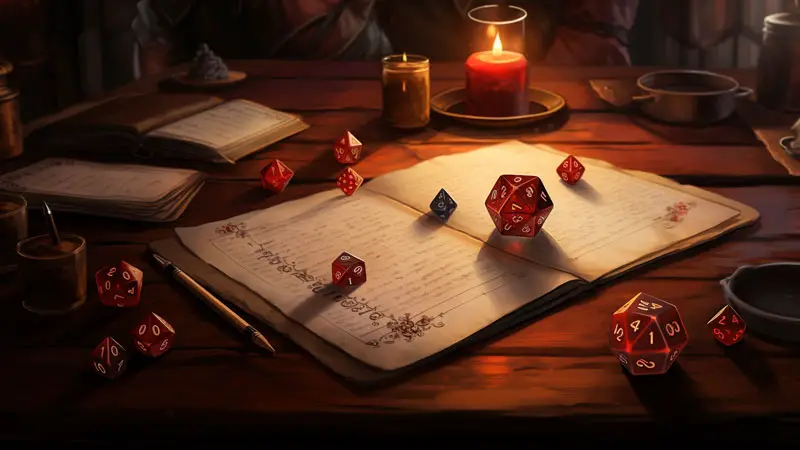
When you and your party wander around the world your DM created for you, you’ll encounter NPC, dungeons and infinite situations that will shape the story and the fate of your characters.
D&D uses polyhedral dice to determine the outcomes of various actions.
The most common is the 20-sided die (d20), which you’ll use for ability checks, saving throws and attack rolls.
Other dice include d4, d6, d8, d10, and d12, mainly used for calculating damage, healing, and some random effects.
Check out my article on how to use D&D dice for a better understanding of this core mechanic.
D&D uses dice to determine the outcome of combat and spellcasting too. More of this in the section below.
D&D Combat Mechanics
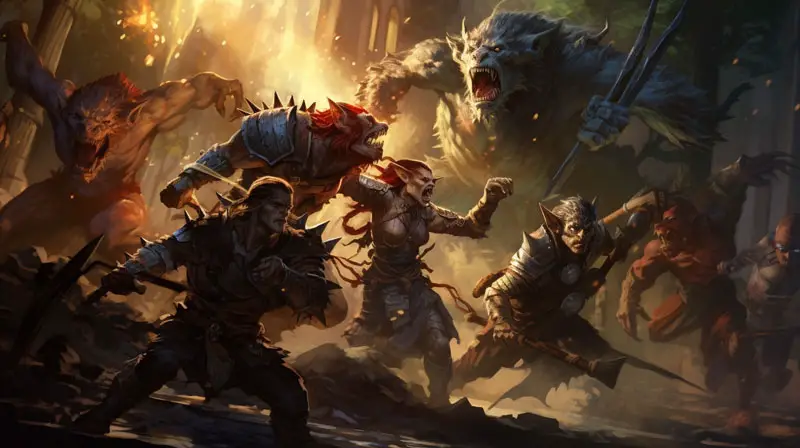
In D&D, combat is an integral part of the game.
Let’s take a look at some of the core combat mechanics: Actions and Turns, Movement, and Damage and Hit Points.
Actions and Turns
Combat in D&D is turn-based, with each participant taking a turn in order of their Initiative (determined by a d20 roll plus Dexterity modifier).
Generally speaking, on your turn, you can take one action, one bonus action (if available), one reaction (if triggered), and you can move up to your speed.
Here are some examples of actions you can take on your turn:
- Attack: you can use a weapon to attack an enemy.
- Cast a spell: you can cast a spell from your spell list, provided you have the necessary spell slots and components.
- Dodge: you can focus on avoiding attacks, giving enemies disadvantage on their attacks against you.
- Disengage: you can move away from an enemy without provoking an opportunity attack.
- Help: you can assist an ally with a task, giving them advantage on their next ability check.
- Use an object: you can use an item in your inventory, such as a potion or tool.
Turns are broken down into six-second intervals, allowing for a more accurate simulation of real-time combat.
Movement
When you trigger a battle, your character has a limited amount of space he can travel in a single turn. This distance is defined by the Speed of your character, and it’s usually measured in feet (unlucky me that I can’t deal with “feet” as I’m used to “meters”).
Movement is a crucial aspect of D&D combat, as a bad or good character placement can easily turn the fate of a battle.
Remember that difficult terrains can affect movement.
Damage and Hit Points
Your character’s Hit Points (HP) represent their overall health. Damage from attacks or spells subtracts from your HP.
To protect your hit points, your character can hold a shield and/or wear light, medium or heavy armour. The level of protection these gears give you is measured with the Armour Class (AC) value; The higher the AC, the more difficult it’s for an enemy to hit your character.
This also applies to you when you want to attack someone. To attack an enemy you have to roll a d20 and add your relevant ability modifier and proficiency bonus.
If the result is equal to or greater than the target’s Armour Class (AC), the attack hits.
You then roll for damage, typically using a combination of dice and adding your ability modifier.
The dice you have to roll are determined by your character’s weapons or spells. For example, if your character swings an attack with a longsword, you will deal 1d8 damage (roll one eight-sided die).
Keep track of your character’s hit points throughout the battle, and utilise various ways to regain them, such as healing spells or potions.
When your character reaches 0 HP, they’re considered unconscious and risk dying if they don’t receive aid.
D&D Spellcasting Mechanics
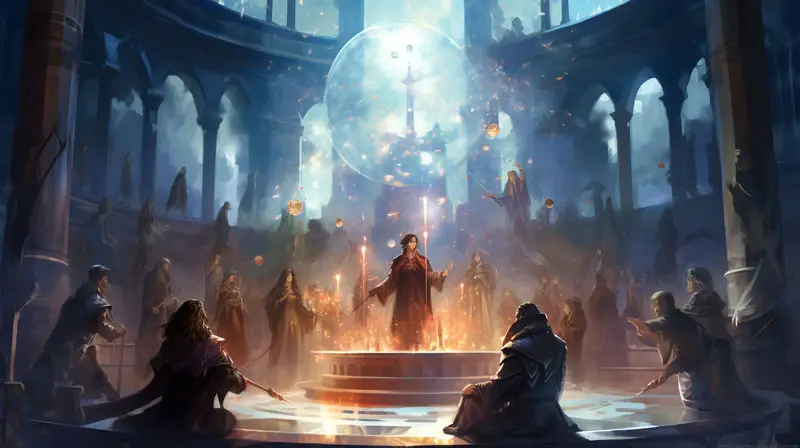
In the world of Dungeons & Dragons, magic plays an essential role in shaping the experiences of players, and their characters.
As you delve deeper into the game, you’ll encounter various magical elements that can impact your character’s abilities, challenges and storylines.
In this section, I’ll explore some of the fundamental aspects of magic in D&D, focusing on spellcasting, types of magic, and magic items.
Spellcasting is the art of harnessing and manipulating arcane or divine energy to produce a wide range of magical effects.
As a spellcaster, you might be a wizard using your intelligence to draw upon ancient tomes, or a cleric using the power of your faith to heal or smite your enemies. Spells are divided into levels, with higher-level spells usually more potent and complex.
To cast a spell, you’ll need to meet certain prerequisites, such as possessing a high enough ability score related to your class or having the necessary components, like verbal, somatic or material elements.
When you cast a spell, you’ll need to expend a spell slot, the currency for casting spells in the game. As you level up, you’ll gain access to more, and higher-level spell slots, allowing you to cast more powerful spells and increase your character’s flexibility in combat.
Types of Magic
Magic in D&D flows from various sources and can be broadly divided into the following categories:
- Arcane Magic: this form of magic comes from the manipulation of the arcane energies that permeate the universe. Wizards, sorcerers, and bards are typical arcane spellcasters, using logic, innate talent, or artistic expression to master their craft.
- Divine Magic: empowered by the faith in their deity or the divine principles they uphold, divine magic users, such as clerics, druids, and paladins, channel divine energies to perform miracles. This type of magic often revolves around healing, protection, and smiting evil forces.
Magic Items
Throughout your adventures, you’ll come across various magic items that can enhance your character’s abilities, provide unique benefits or bestow powerful spells. Magic items range from simple potions to legendary artifacts with the power to reshape the course of history.
Some common types of magic items include:
- Weapons and Armour: magical weapons and armour often possess enchantments that provide bonuses to attack rolls, damage, or defence. For example, a +1 longsword increases both your chance to hit and the damage dealt with it.
- Potions: potions are consumable magic items that provide temporary or one-time-use effects, such as healing or resistance to certain types of damage.
- Wondrous Items: these are diverse and unique magical items that provide various abilities or effects, such as a Bag of Holding, which can store a vast amount of equipment despite its small exterior.
As you explore the magical world of D&D, keep in mind how spells, different types of magic, and magical items can shape your character’s abilities and story. Magic can truly make your experience in the game unique and unforgettable.
The Dungeon Master in D&D
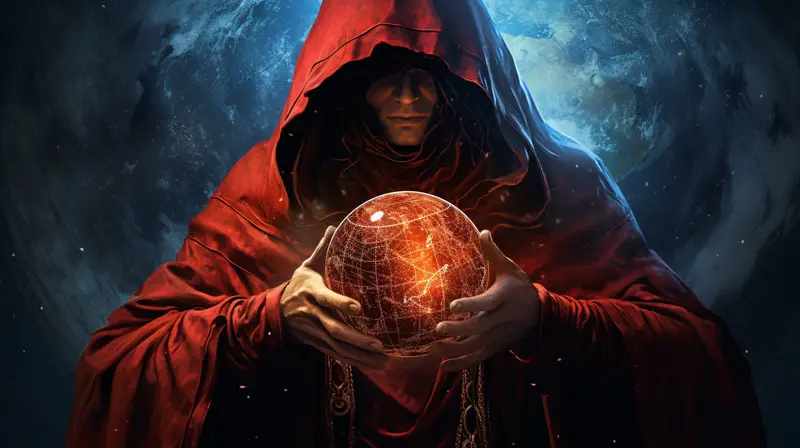
Creating a Story
As the Dungeon Master (DM), you are the heart and soul of the game.
It’s your responsibility to craft an engaging story where your players can explore dungeons, encounter monsters, and interact with non-player characters (NPCs) to create memorable experiences.
Begin by envisioning a world full of adventures, interesting locations, and hidden mysteries. Consider the setting, main questlines, and possible side quests.
Always remember to keep the tone friendly and inviting to enhance the gaming experience for your participants.
Managing the Adventure
While orchestrating the adventure, it’s important to strike a balance between structure and flexibility.
While you should prepare plotlines, encounters, and challenges in advance, be willing to adapt when your players choose to venture off the beaten path. Additionally, be prepared to think on your feet, as unexpected situations can arise at any moment.
Maintaining a balance between guiding the story and allowing players to make their own choices will keep the game engaging and enjoyable for everyone involved.
Controlling NPCs
As the DM, you’ll need to create and manage the numerous NPCs your players will encounter throughout their journey.
These characters may include allies, enemies, or those who fall somewhere in between those categories. To enhance immersion, give each NPC distinct personalities, backgrounds, and motivations. This level of detail helps bring the world to life and encourages players to interact with the various inhabitants of your story.
Tools for Playing D&D
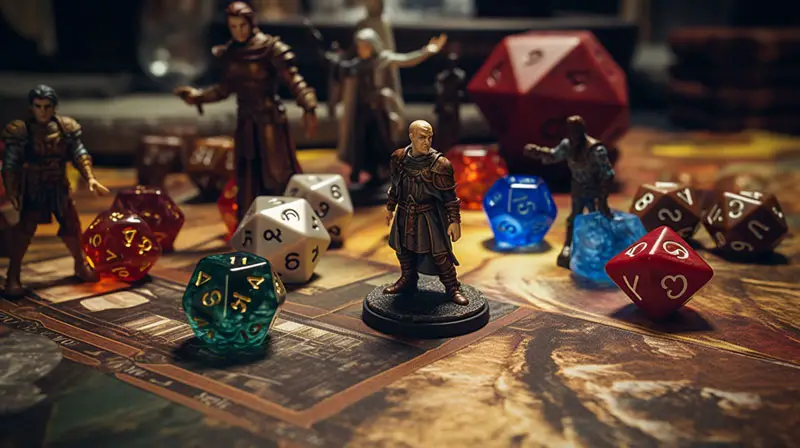
Physical Resources
When you begin your journey into the world of Dungeons & Dragons, there are several physical resources to consider.
To start, you’ll need a Player’s Handbook which contains all the essential rules and guidance for creating your characters and diving into the game. Additionally, the Monster Manual introduces you to the various creatures and foes you may encounter during gameplay.
To enhance your tabletop RPG experience, consider investing in Miniatures (I can’t personally play without them. I usually use Warhammer miniatures but anything can be used really).
These small, detailed figures represent your in-game characters and other important elements on the battlefield. You can either purchase ready-made miniatures or customise your own.
Character Sheets are another must-have at the table. These sheets enable you to record and track all of your character’s abilities, skills, and experiences. You can print out blank character sheets or find pre-generated ones online if you prefer.
Lastly, tabletop accessories such as dice sets, maps, and props can further immerse you in the roleplaying experience.
Digital Resources
Incorporating digital tools into your D&D game can greatly enhance your experience, and one excellent platform to consider is D&D Beyond. This comprehensive digital resource offers a vast library of articles, interactive character sheets, digital versions of rulebooks (with limitations), and more.
You can even access the platform on various devices, making it convenient for home, travel, or remote play with friends.
In addition to D&D Beyond, there are plenty of digital tools and media platforms available to help you get the most out of your D&D sessions.
Some popular options include virtual tabletop applications, video tutorials, podcasts, and apps for tracking initiative and monster conditions.
As you delve further into the world of D&D, you can combine these physical and digital resources to maximise your enjoyment and create memorable roleplaying adventures for you and your fellow players.